Gardeners in chilly climates are familiar with the dreaded feeling that comes with the first frost. The good news is that the end of summer doesn't have to mean saying goodbye to plants that you've nurtured. Many delicate perennials, container annuals and tropicals can survive as houseplants until spring. When your plants are in easy-to-move containers, the job is simple. But even plants in the ground can be carefully dug up, potted and brought inside for fall and winter.
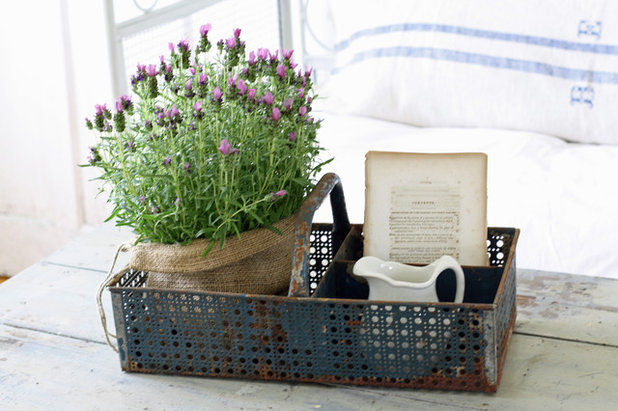
The best advice when it comes to overwintering is to plan ahead and bring your outdoor plants inside before it becomes imperative. Plants given time to adjust to their new environment will fare much better indoors than those that are moved with no forethought.
The general rule is to bring plants indoors before night temperatures dip below 45 degrees Fahrenheit. Some tropicals should be brought indoors when temperatures dip below 50 degrees, and orchids should be moved indoors when temperatures drop to the 55- to 60-degree range.
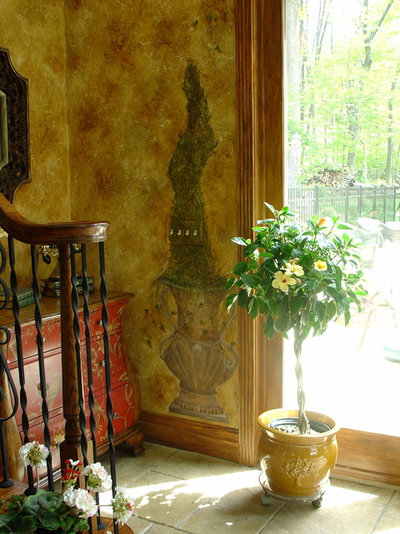
ADRIS GROUP
Acclimation to the indoors. Because conditions differ widely between the inside and outside of your home, a gradual introduction (or reintroduction) to the indoors is vital. Sudden changes in temperature, light and humidity can cause irreversible trauma to plants, and at the least can result in yellowing leaves, wilting and even partial death.
Plants that have been outside in high light should be placed in similar light indoors, such as near a south-facing window or under fluorescent plant lights on a timer for 16 hours a day. To acclimate sun-loving outdoor plants to a dimmer indoor spot, keep them in a shady spot outdoors for a week or two before moving them indoors.
Even with the greatest care, outdoor plants may wither and droop when moved indoors. If some leaves turn yellow or drop off, don't despair. Trim the dead growth, keep the humidity levels up and put the plants in a bright location, and they might recover once they are familiar with the conditions in their new home.
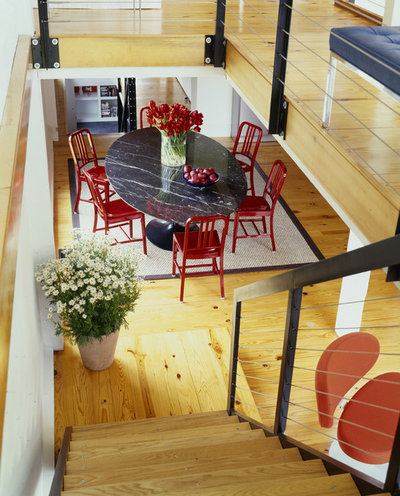
Sandvold Blanda Architecture + Interiors LLC
Facilitating a dormant period for woody species. Depending on the kinds of plants you'd like to overwinter, and the available space in your house, you may benefit from allowing some woody species to go dormant in a sheltered garage, an unheated basement or an outdoor shed. Roses, hardy hibiscus, lavender, rosemary and shasta daisy are among those plants that can withstand, and even benefit from, a period of dormancy in the winter. Keep the pots from drying out entirely and make sure that the temperature stays roughly between 20 and 40 degrees. Dormant plants do not need light or fertilizer.
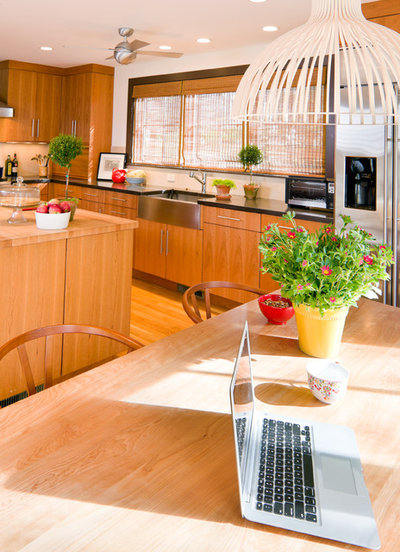
Kristen Rivoli Interior Design
Trimming and taking cuttings. If a container plant has gotten leggy over the summer, gently remove it from its container and prune the top and roots in equal proportions. Scrub the pot to rid it of any fungi or infestation. Add fresh bagged potting soil (not garden soil, which may have diseases), then replant.
This is also a good time to take cuttings of annual flowers, such as impatiens, begonias, geraniums and coleus. They root easily in water or sand, and make attractive houseplants, which can then be planted in the garden come spring.
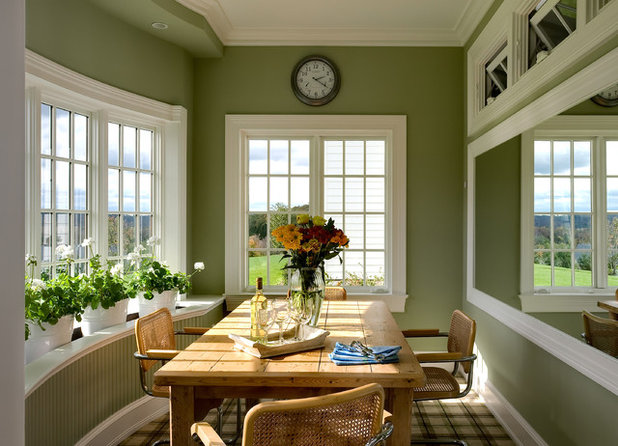
Crisp Architects
Setting the stage. Thoroughly clean windows both indoors and out to allow as much light in as possible. A sunny window ledge, a shelf mounted across a window or even a built-in recessed niche like the one here can become a gorgeous flowering garden all winter long. With the proper conditions, many flowering plants can provide winter blooms indoors. Geraniums, impatiens and begonias are a sure bet. For the adventurous, even Evolvulus and verbena can be overwintered as well, though they will need a very bright location like a sunroom or greenhouse.
Here is a short list of garden plants that can be successfully overwintered or grown indoors, some with greater success than others, but all certainly worth a try: Abutilon, angel's trumpet, begonia, bougainvillea, citrus (including lemons, calmondins and kumquats), coleus, ficus, geranium, hibiscus, impatiens, Mandevilla, passionflower, pentas, rosemary, shasta daisy and all succulents.
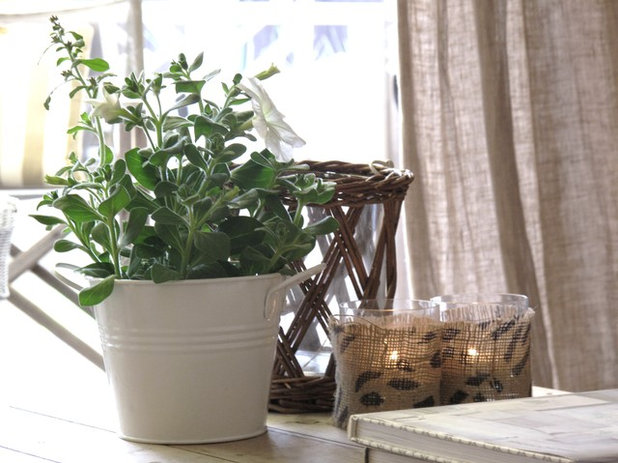 Pest control.
Pest control. Always remember to inspect plants for infestation and disease, and treat the problem before bringing them inside. If you suspect that there may be snails, worms or other insects burrowing in the soil, soak the pot in a tub of lukewarm water for about 15 minutes, which will force them out. (Don't do this with plants that go semidormant or dormant in the winter, such as succulents and bulbs, because these plants need dry soil throughout their dormant period. Repot any such plants and place a piece of wire screening over the drainage hole to keep out the little critters next year.)
Before bringing plants indoors, treat them with an organic all-purpose plant spray for several weeks to get rid of small pests (those that you see and those that you don't). Or you can spray soap-tolerant plants with a soap solution, which can also be an effective nontoxic insecticide.
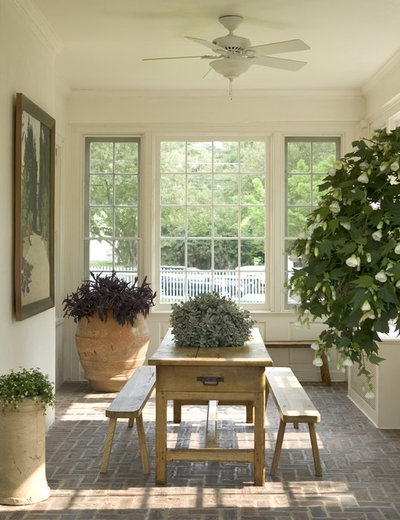
Dennison and Dampier Interior Design
Growing garden varieties indoors year-around. Don't be surprised if some of your overwintering experiments are so successful that you decide to make a permanent home indoors for plants usually seen in the garden. The collection seen here is stunning and unique as well as unexpected. Diligent trimming maintains the compact forms and shows off the plants' gorgeous hues.
The 3 main plants thriving in this sunroom:- The Purple Heart vine in the corner is especially easy to grow; propagate it by simply sticking cuttings into soil.
- The silver-leaved foliage plant on the table appears to be Dusty Miller (Senecio cineraria); it's a fantastic decorative touch in this rustic, historic-looking room.
- The blooming bush is Abutilon, which, with proper pruning and repotting twice a year, can be kept as a houseplant for many years. Abutilon prefers a cool winter room and less water, followed by warmth and adequate moisture in the summer.
Important considerations for overwintering outdoor plants:Location: Generally the best indoor location for any outdoor garden plant is near a sunny window. Don't allow any leaves to touch a cold window. Keep the plants away from drafts as well as heating vents.
Because the dry winter air inside our homes can be detrimental to overwintering, a well-lit bathroom or laundry room (both humid) may be the best place for your plants. The leaves will turn brown and crisp if there's not enough moisture in the air.
Timing: Allow plants to
gradually acclimate to the very dry effects of indoor heating by bringing them indoors before you actually start heating your home.
Care: Provide extra humidity by misting the leaves daily and consider placing the plant's container on a shallow water-filled tray lined with small stones, so the pot stands on the stones but not in the water. During the cool seasons, many plants naturally become dormant or grow at a very slow pace. Watering should be done only when the soil appears dry, but do water the plant deeply enough so that water drains from the bottom of the pot into the tray or plate. Fertilizer is generally not recommended.
Cautions: Many plants are toxic and even riskier for children and animals than adults, so do your homework to determine which plants to keep out of reach if necessary.





